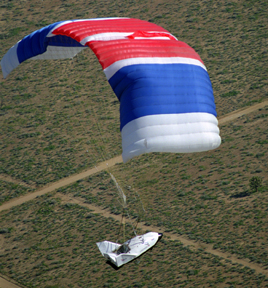 X-38 SUMMARY
X-38 SUMMARY
The X-38 program was initiated to demonstrate
the technologies required to develop a Crew Return Vehicle (CRV).
The X-38 design effort was begun at Johnson Space Center in 1995 as an
alternative to the Russian Soyuz capsule, which was too small for the Station's
six person crew. The vehicle is being developed in-house by NASA
at a fraction of the cost of past human space vehicles. The goal
is to take advantage of Commercial Off-the-Shelf (COTS) technology
for 80% of the vehicle to deliver four flight units for approximately $500
million.
The X-38 / CRV will be ferried to the
International Space Station by the Space Shuttle where it will remain docked
for up to two years and serve as a crew life boat in the event of an emergency.
The X-38 design uses a lifting body
concept originally developed by the Air Force's X-24A project in the mid-1970's.
After the de-orbit engine module is jettisoned, the X-38 would glide from
orbit unpowered like the Space Shuttle and then use a steerable, parafoil
parachute, a technology recently developed by the Army, for its final descent
to landing. Its landing gear would consist of skids rather than wheels.
|